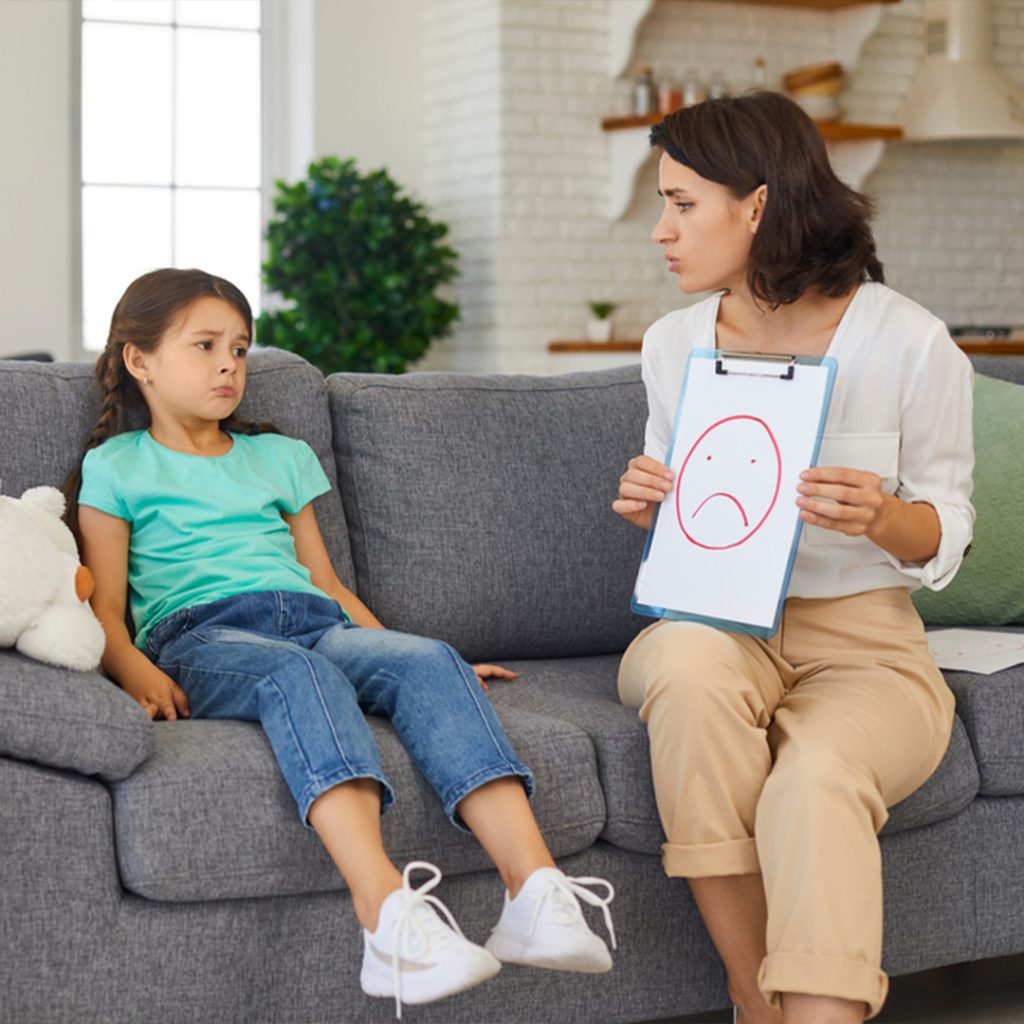
How to Teach Empathy to Kids: A Comprehensive Guide
Teaching empathy to kids is an essential life skill that will help them become kind and compassionate adults. Empathy is the ability to understand and share the feelings of others. It helps kids to be more considerate, respectful, and tolerant towards others, which is critical to building healthy relationships. As a parent, you play a crucial role in teaching your child empathy. To help you in this important task, we’ve compiled a comprehensive guide with strategies for teaching empathy to kids.
How to Teach Empathy to Kids?
Start with Emotional Expression
 To cultivate empathy in children, it’s crucial to begin by teaching them how to express emotions. To help your child develop their ability to express themselves, here are some activities you could consider trying:
To cultivate empathy in children, it’s crucial to begin by teaching them how to express emotions. To help your child develop their ability to express themselves, here are some activities you could consider trying:
- Feeling Faces: Print out pictures of facial expressions, like happy, sad, angry, and surprised. Encourage your child to show which face matches how they are feeling.
- Emotion Songs: Sing songs that express different emotions, like “If You’re Happy and You Know It” or “If You’re Angry and You Know It.” Sing along with your child and act out the emotions together.
- Mirror Play: Encourage your child to make faces in the mirror and describe how they feel. This can help them learn to recognise and talk about different emotions.
Books That Teach Empathy
Reading books can be a great way to help your child understand and connect with other people’s feelings. Here are some of the best books for kids that promote empathy:
- “The Feelings Book” by Todd Parr: This book is a great way to introduce your child to different emotions for kids and help them understand that it’s okay to have different feelings.
- “When Sophie Gets Angry – Really, Really Angry” by Molly Bang: This book teaches kids how to deal with anger and communicate their feelings healthily.
- “The Invisible Boy” by Trudy Ludwig: This book is about a boy who feels invisible to his classmates, but with the help of a new friend, he learns to feel seen and valued.
- “Stand in My Shoes” by Bob Sornson: This book teaches kids how to step into other people’s shoes and understand their feelings and perspectives.
- “You, Me and Empathy” by Jayneen Sanders: This book is a great way to teach young children about empathy and kindness towards others.
Teach Your Child to Listen
Listening is an essential part of empathy. It helps your child to understand what others are feeling and to respond appropriately. Here are some ways you can teach your child to listen:
- Eye Contact: Encourage your child to look at the person talking to them. This shows that they are paying attention and helps them focus on what the person is saying.
- Listening Skills: Teaching listening skills to young children is crucial for their development. Help your child understand that being quiet and paying attention when someone is speaking is an important part of communication.
- Repeat Back: Teach your child to repeat what they heard in their own words. This helps them understand the message and shows that they are paying attention.
Activities to Teach Kids Empathy
 Here are some empathy activities for kids that you can do with your child:
Here are some empathy activities for kids that you can do with your child:
- The Feelings Jar: Fill a jar with different coloured pom-poms or beads representing different emotions. Ask your child to pick one and talk about how they would feel if they were experiencing that emotion.
- The Empathy Game: Play a game where your child has to identify how someone else is feeling based on their facial expressions or body language.
- Empathy Drawings: Ask your child to draw a picture of someone sad, happy, or angry. Ask them to talk about what they think the person might be feeling.
Model Empathy
Kids learn by example, so modelling empathy in your behaviour is essential. Here are some ways you can model empathy:
- Be Kind to Yourself: Show your child how to be kind to others by being kind to yourself. This means treating yourself with compassion and understanding and acknowledging your feelings.
- Show Empathy Towards Your Child: When your child is upset, show empathy towards them by listening to them, acknowledging their feelings, and responding in a way that shows you understand and care about them.
- Use Positive Language: Avoid using negative language that can hurt their feelings, and instead, use positive language that shows empathy and kindness. For example, instead of saying, “Stop being so annoying,” you could say, “I can see that you’re upset; let’s talk about what’s bothering you.”
The Importance of Facial Expressions and Emotions
Empathy is an important skill that children can learn, starting with the basics of understanding and relating to other people’s feelings. Here are some activities to help your child develop their emotional awareness.
- Music and Movement: Encourage music and movement to help your child’s brain development and emotional expression. Play music that evokes different emotions and have them dance or express their feelings.
- Mindful Breathing: Teach your child to take deep breaths and pay attention to how they feel in their body. This can help them recognise when they are feeling a certain emotion and give them time to process it before reacting.
- Sensory Play: Provide sensory materials, such as playdough, slime, or sand, and ask your child to describe how the material feels and makes them feel.
Overcoming Difficulty in Expressing Emotions
Some kids may have difficulty expressing their emotions. Here are some ways you can help your child overcome this difficulty:
- Use Art: Art can be a helpful way for children to express themselves when words are difficult. Encourage your child to draw or paint how they feel or make a collage of different emotions.
- Encourage Physical Activity: Physical activities can be a great way for children to release pent-up emotions. Encourage your child to run, dance, or jump around to help them healthily release their emotions.
- Create a Safe Space: Provide a space where your child can go when they need to express their emotions privately. This could be a designated “emotions corner” in their bedroom or a quiet space in the house.
Teach Problem-Solving Skills
Empathy is not just about understanding others’ feelings; it’s also about taking action to help others. Here are some ways you can teach your child problem-solving skills:
- Encourage Exploration: Allow your child to explore and experiment with different materials, such as blocks, puzzles, or art supplies. This can help them develop problem-solving skills and learn how to find solutions independently.
- Simplify Choices: Provide your child with simple choices to help them develop decision-making skills. For example, ask them if they want an apple or a banana for a snack.
- Model Problem-Solving: Model problem-solving skills for your child by talking through the steps you take to solve a problem. This can help your child learn how to approach problems and find solutions.
Encourage Empathy through Play
Play is a powerful tool for teaching empathy. Here are some activities you can do with your child to encourage empathy through play:
- Role-Playing: Encourage your child to play different roles, such as a doctor, teacher, or firefighter. This can help them learn to understand and empathise with others in different professions.
- Puppet Shows: Use puppets to act out different scenarios, such as a sad puppet or a puppet who needs help. This can help your child recognise and respond to others’ emotions.
- Sharing Games: Play games that involve sharing and taking turns, such as passing a ball or playing with blocks. This can help your child learn to understand and respect others’ needs.
Teach Your Child to Apologize
Apologising is an important part of empathy. It helps your child to take responsibility for their actions and to show that they care about others’ feelings. Here are some ways you can teach your child to apologise:
- Say “I’m sorry”: Teach your child to learn important values and say “I’m sorry” when they have hurt someone’s feelings. This shows they understand their impact and care about the other person’s feelings.
- Make Amends: Encourage your child to make things right when they have made a mistake. For example, if your child breaks a toy, they can offer to fix or replace it. This shows they are taking responsibility for their actions and trying to improve things.
- Model Apologies: Set a good example for your child by apologising and making amends when you make a mistake. This shows your child that apologising is a normal part of being human and that taking responsibility for your actions is important.
Conclusion
This guide has provided parents with strategies and tips on how to teach empathy to kids. Empathy is a vital life skill that helps children develop respect, compassion, and tolerance towards others. By using activities such as emotional expression, listening skills, problem-solving skills, modelling empathy, and encouraging empathy through play, parents can help their children understand and relate to other people’s feelings. Remember to be patient and consistent in your efforts, as empathy is a skill that takes time and practice to develop. At Tappy Toes Nursery, we foster empathy in young children. By teaching kids to recognise and understand their feelings, listen to others, and respond with kindness and compassion, we are creating a kinder, more empathetic world for all.


